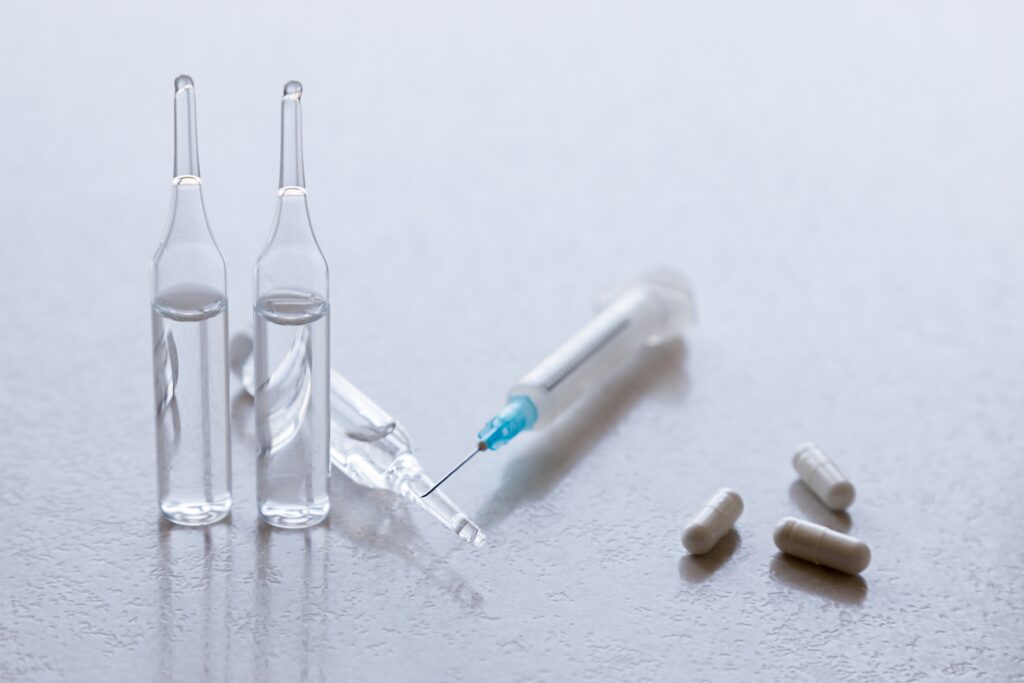What is Fentanyl?
The Centers for Disease Control and Prevention (CDC) defines fentanyl[1] as a synthetic opioid that has a potency up to 50 times that of heroin and 100 times that of morphine. In the United States, it is a leading cause of fatal and nonfatal overdoses.
Fentanyl, which is a synthetic opioid, can be classified into two categories, pharmaceutical fentanyl or illicitly made fentanyl. Doctors use pharmaceutical fentanyl to alleviate extreme pain, particularly after surgery and in advanced-stage cancer.
However, the majority of recent fentanyl-related overdose cases have been attributed to illicitly made fentanyl, which is sold on the black market for its heroin-like effects. Because of its extraordinary strength, it is frequently added to other drugs, making them cheaper, more powerful, more addictive, and more hazardous.
What is fentanyl used for?
Fentanyl is a very powerful opioid painkiller. If you have extreme pain from cancer, nerve damage, a traumatic injury, or major surgery, your doctor may prescribe fentanyl.
It’s also used to treat different sorts of pain that have afflicted patients for a long period of time and have not been alleviated by using lesser medications.
Fentanyl is only available with a doctor’s prescription. It’s packaged as follows:
- nose spray
- patches for your skin
- lozenges and tablets that dissolve in your mouth
- injections (usually only given in hospital)
What is fentanyl abuse and addiction? How does it happen?
Substance abusers can obtain fentanyl by diverting it from legitimate medical supplies or manufacturing it in illegal laboratories. They can ingest it, smoke it, snort it, or inject it. There is no one method of use that is safer than another.
Fentanyl patches that have been discarded can still contain significant amounts of the drug. People with opioid use disorders can eat, place under the tongue, smoke, or inject the gel contents of discarded patches.
Many fentanyl analogs are likely to be far more potent than heroin, making the former even more dangerous.
Other illegal drugs, such as heroin and cocaine, are frequently mixed with fentanyl, making them far more potent. People suffering from substance abuse disorders may be unaware of the addition of fentanyl, putting them at a higher risk of accidental overdose or death.[2]
What are the signs of fentanyl overdose?
According to the CDC, the most common drugs involved in overdose deaths are fentanyl and other synthetic opioids. It is fatal even in small doses. Every day, over 150 people are killed by overdoses caused by synthetic opioids such as fentanyl.
Drugs may contain dangerous levels of fentanyl, which you will not be able to see, taste, or smell. Unless you test your drugs with fentanyl test strips, it is nearly impossible to tell if they have been laced with fentanyl.
Recognizing the symptoms of an opioid overdose can help save a life. Here are a few things to keep an eye out for:
- Small, constricted “pinpoint pupils”
- Falling asleep or losing consciousness
- Breathing that is slow, weak, or non-existent
- Sounds of choking or gurgling
- Limp body
- Cold and/or clammy skin
- Skin discoloration (especially in lips and nails)
What should patients using fentanyl know?
The only way to be certain that your fentanyl is authentic is to have it prescribed by a doctor and supplied by a reputable pharmacy. You can take it safely if you follow your doctor’s instructions and take the prescribed dose. Drugs purchased on the street and illegitimate online shops are never safe.
Call 911 immediately if you suspect that someone is suffering from fentanyl overdose.
About IDLogiq
To make sure that you are buying and ingesting authentic medications, IDLogiq developed a state-of-the-art anti-counterfeiting technology that tracks the origin of products and provides real-time insight about what is going on in a supply chain. IDLogiq fights counterfeiting and protects a company’s brand and people’s health and safety by making sure that customers are getting the exact products they are supposed to receive.
For more information, contact us at info@idlogiq.com
References:
- “Fentanyl Facts.” Fentanyl Facts, www.cdc.gov, 23 Feb. 2022, https://www.cdc.gov/stopoverdose/fentanyl/index.html.
- “What Is Fentanyl? Uses, Abuse, and Side Effects.” What Is Fentanyl? Uses, Abuse, and Side Effects, www.medicalnewstoday.com, https://www.medicalnewstoday.com/articles/308156. Accessed 19 Mar. 2022.


